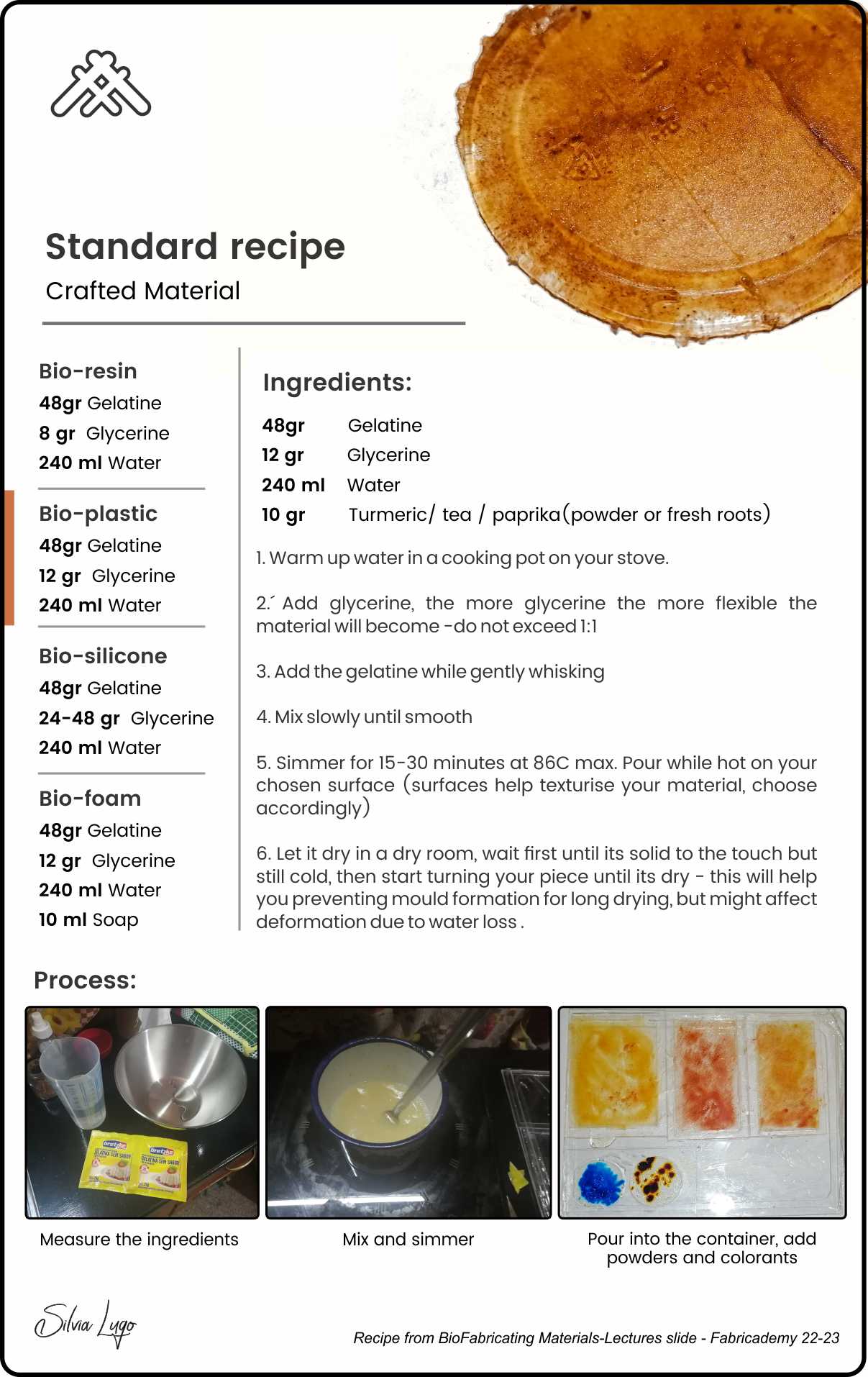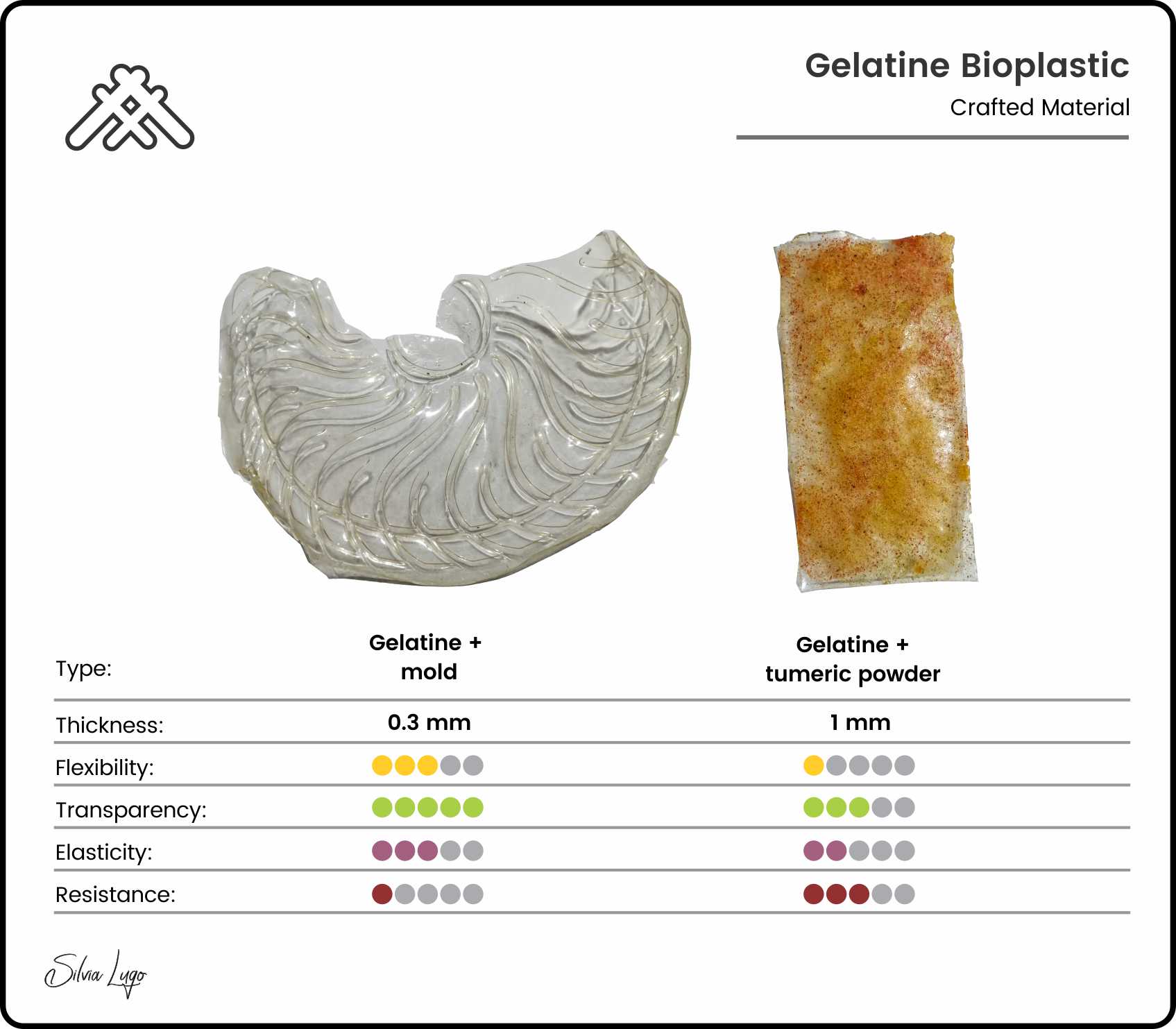Oct 24, 2022
This class will focus on exploring material alternatives to the current ones. By bridging craftsmanship techniques and todays easier access to technologies, we explore alternative material resources in order to craft their processing and develop products and materials hand in hand.
1. Weekly Documentation planning
2.Inspiration and research
3. Crafted Material

At first I made a quick research about Bio plastics. I found books published by Anastasia Pistofidou in Issuu which were really useful for this week's assignment.

I also found the material archive by Textile Amsterdam, is a really complete list of different materials and experimentations.

For my crafted material I decide to work with Gelatine. Gelatine is an animal derived ingredient, made from the collagen present in animal parts. it comes in various forms, such as jelly, dry thin flat sheets or powder, in almost all cases it a translucent material, which can be easily coloured.
Gelatine bioplastics are crafted usually from powder, in combination with water and glycerine. Gelatine ponder is sensitive to heat. and starts melting already at about 60C degree; which makes it ideal for both cooking and recycling for now use.
Recycling of both leftovers and unwanted places is very easy simply by adding water and heat to the mix to re-hydrate and melt the mixture. It is then ready for casting again.

I followed the recipe and place the material in different molds with different sizes. Here are my results:


For my grown material I decide to work with Microbial leather. It is made with Kombudia a fermented tea with a symbiotic colony of bacterial yeast (SCOBY).
Bacteria feed on a liquid medium of sugars and tea, start creating an acidic environment that allows them to thrive and spin cellulose layers.
4.1. Kombucha film, foil & leather
Kombucha can be grown at different thicknesses. It is a layered cellulose material, where the grown material is washed and then dried, either flat or in a shape


I followed the recipe and place the material in a big mold. It took 2 weeks to get the thin foil. Here's the result:
